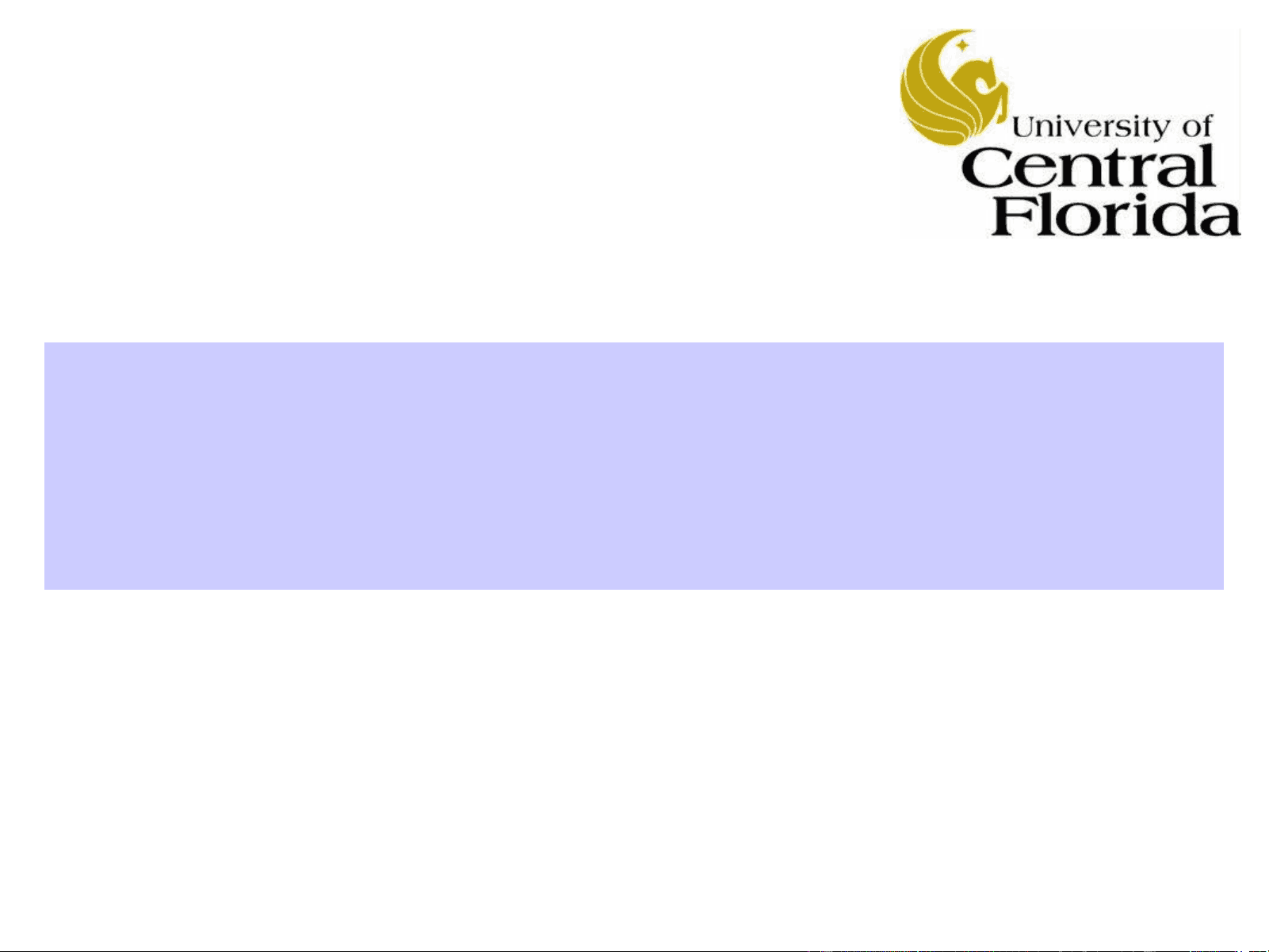
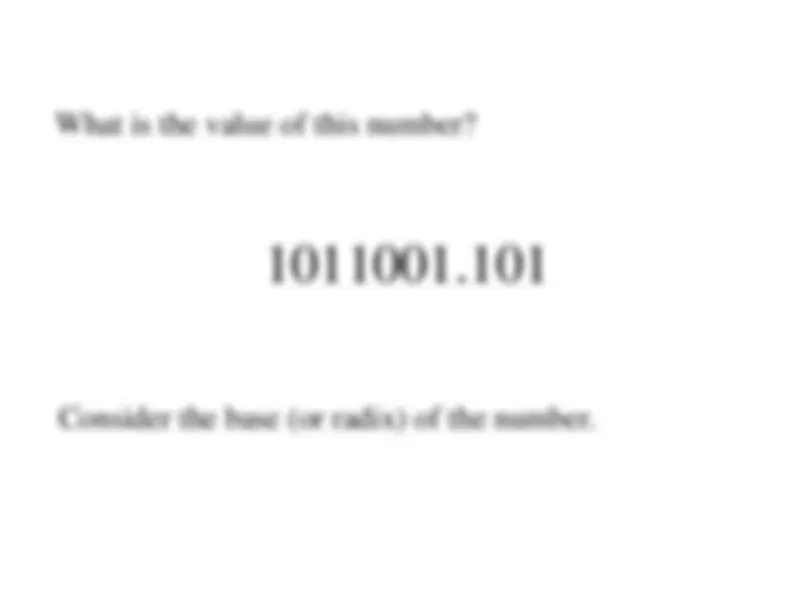
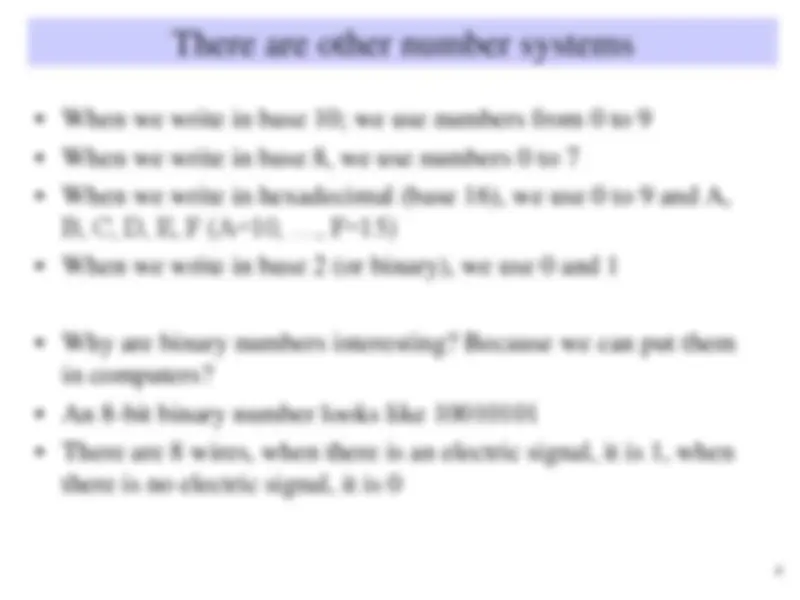
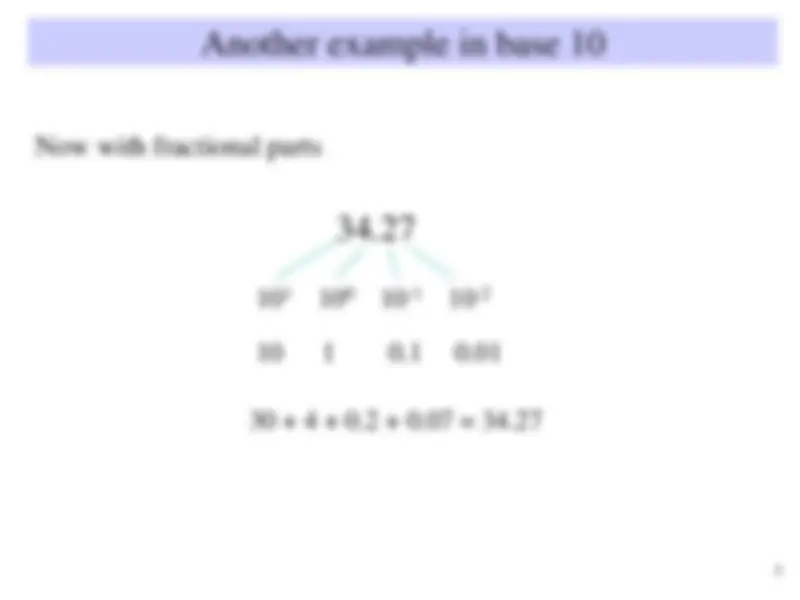
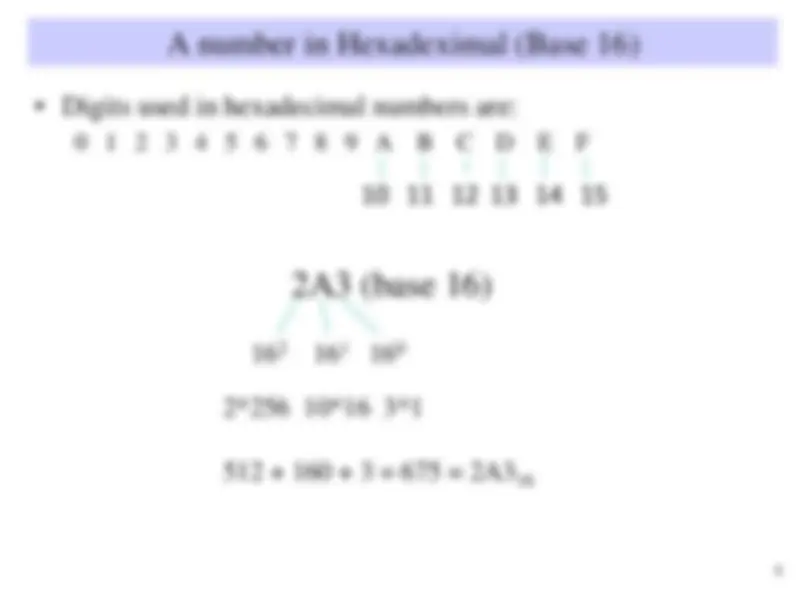
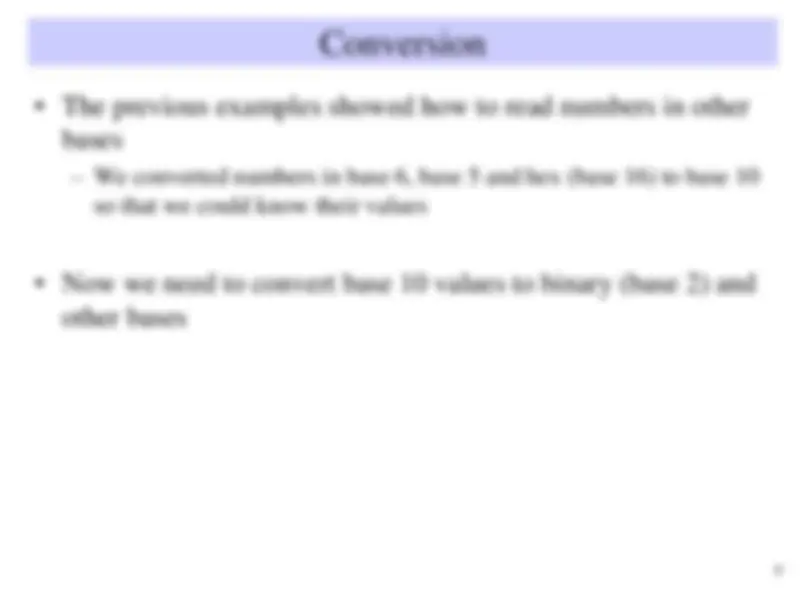
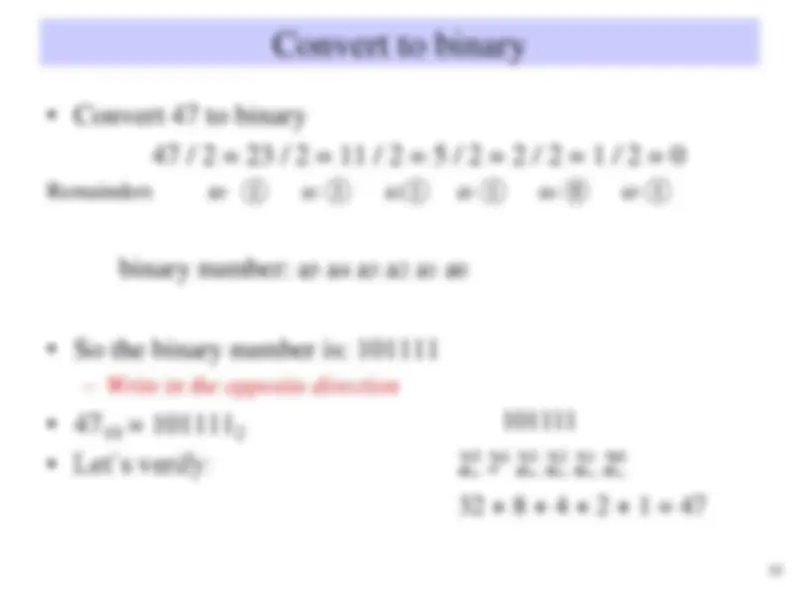
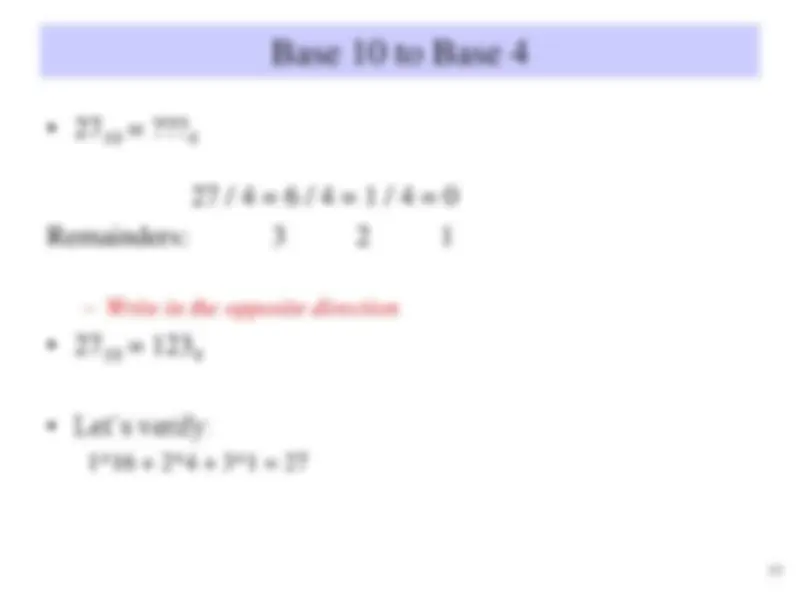
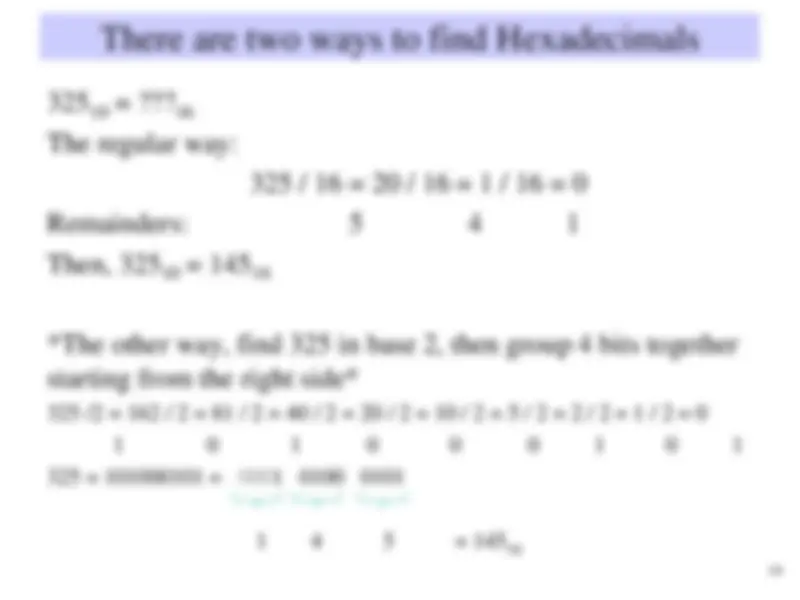
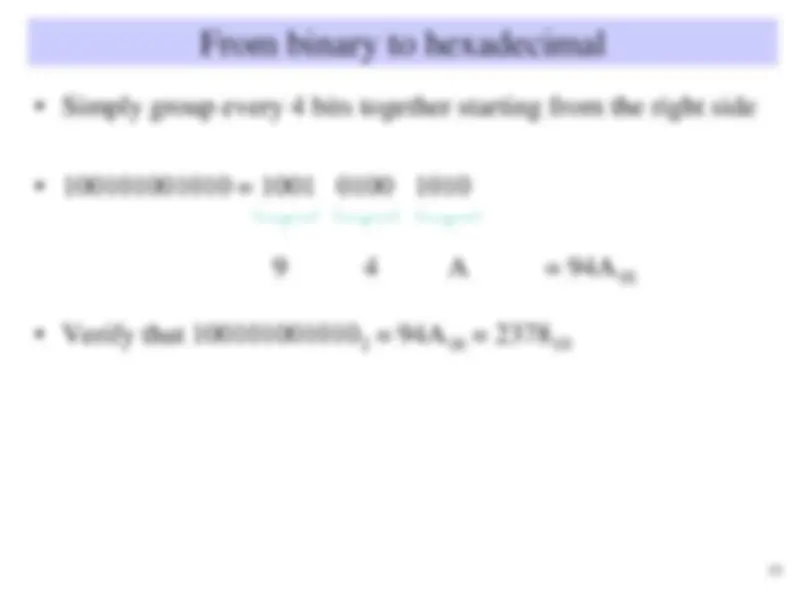
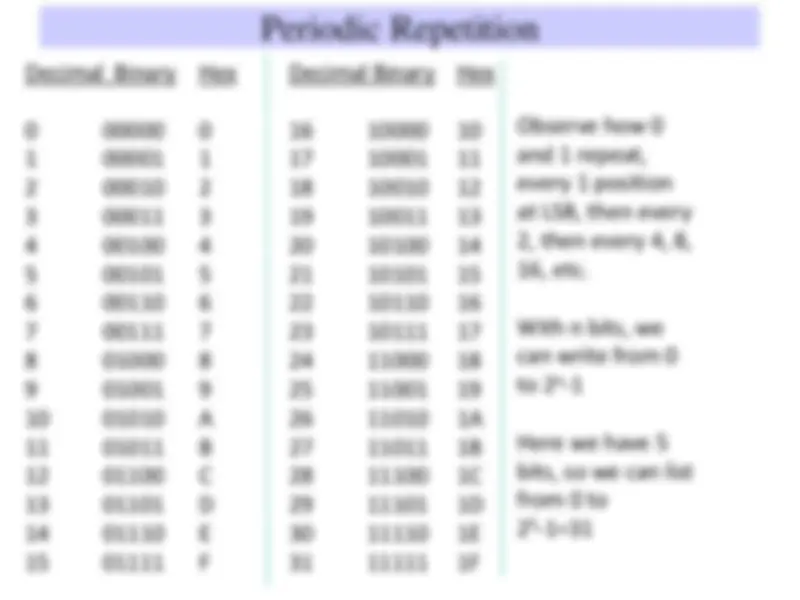
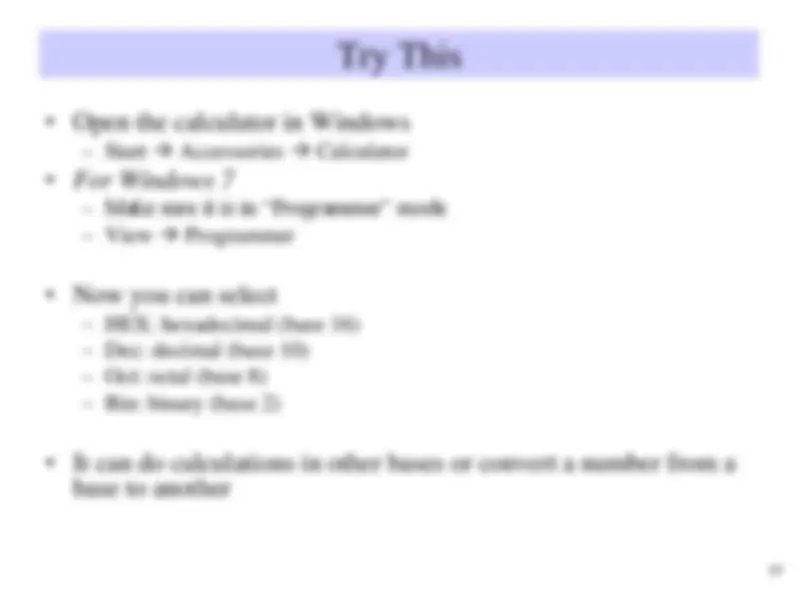
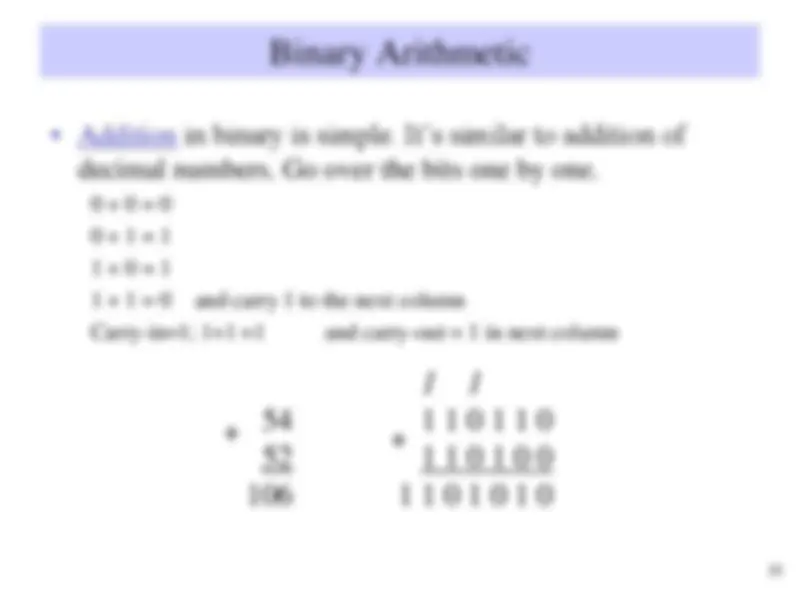
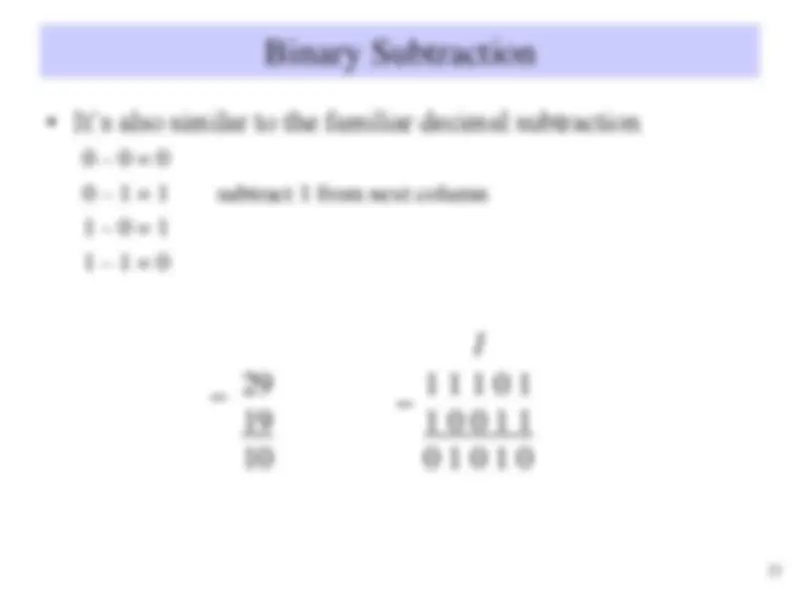
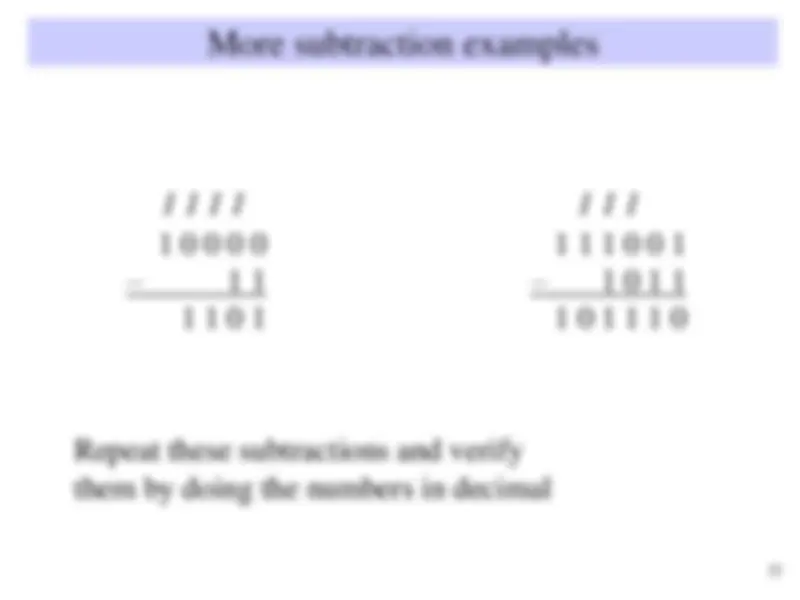
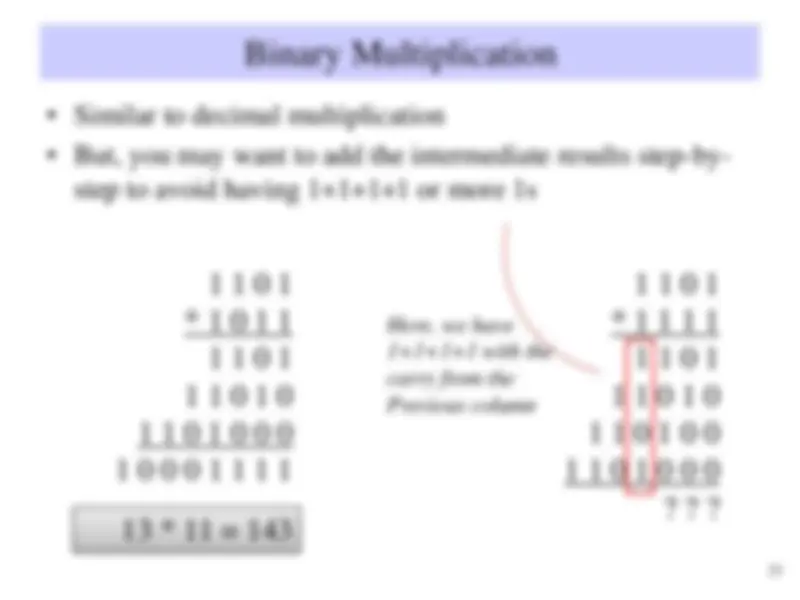
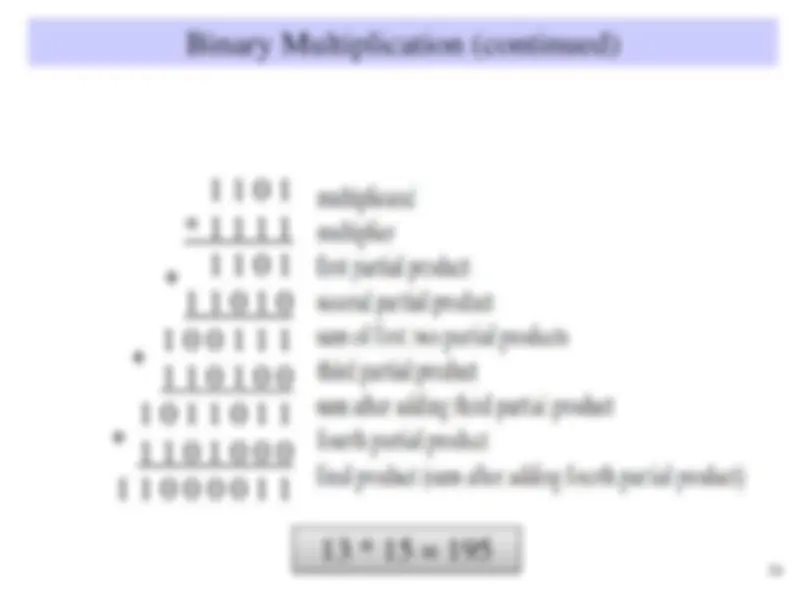
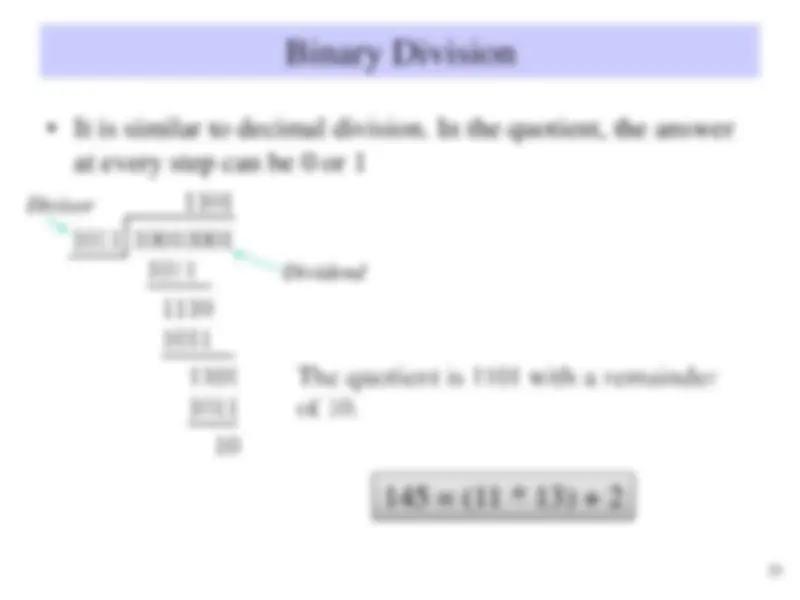
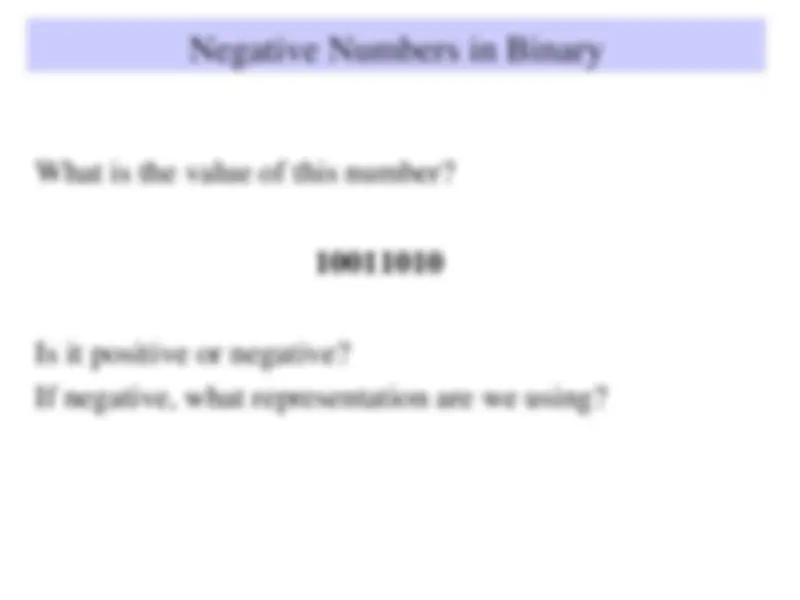
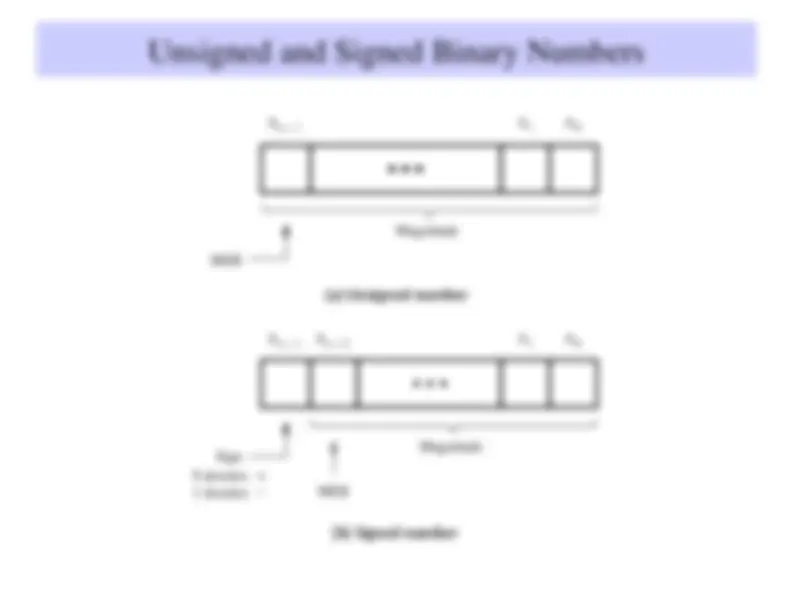
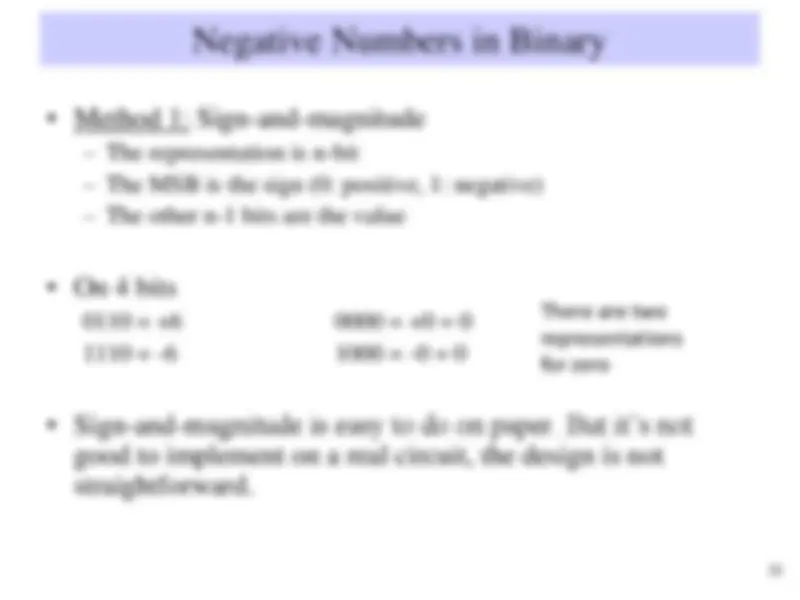
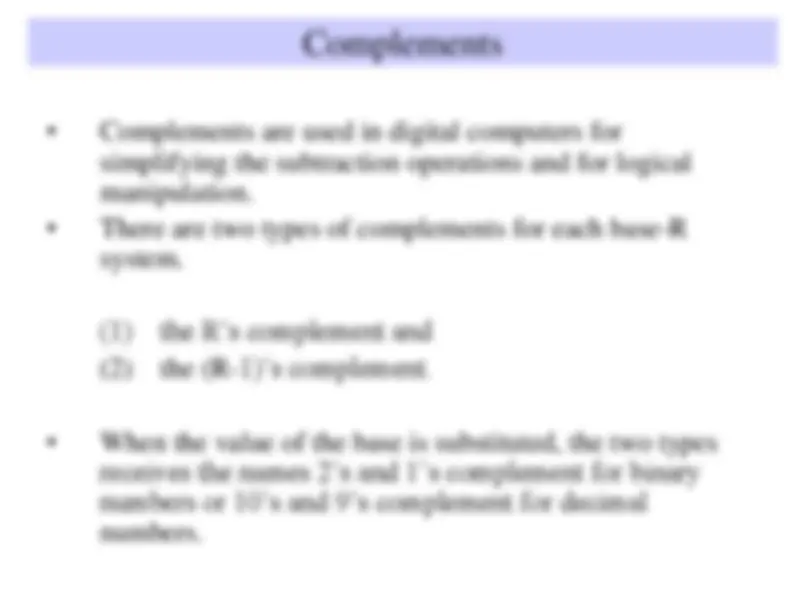
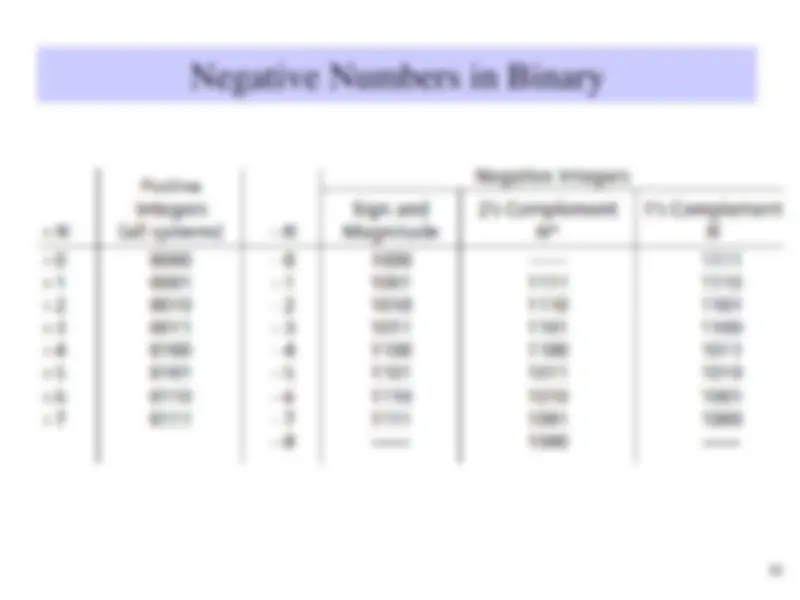
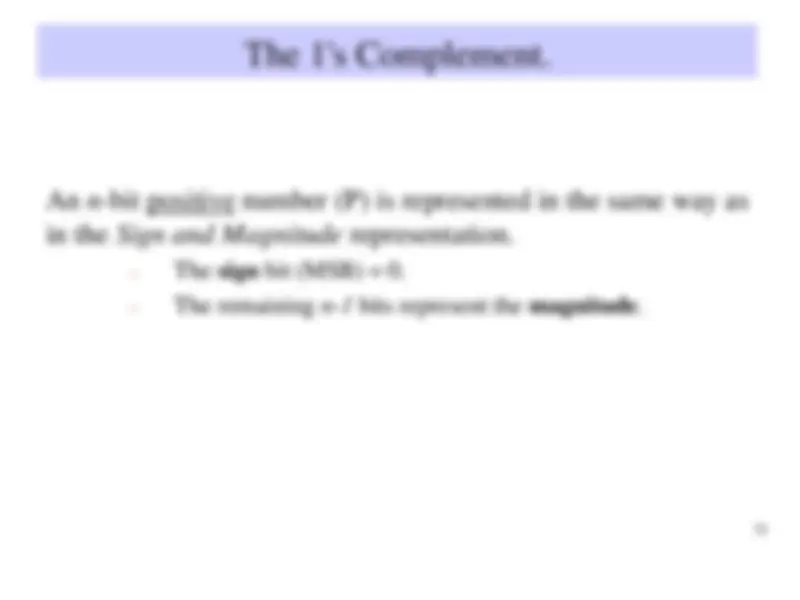
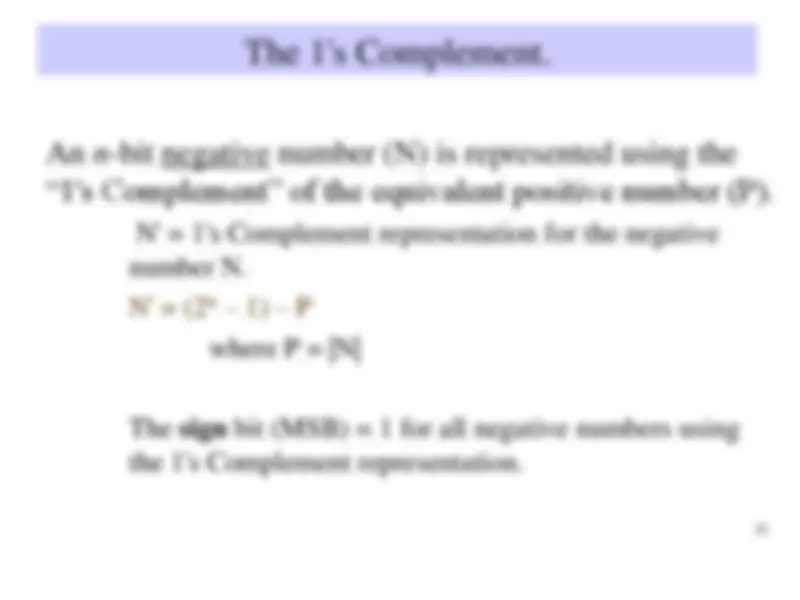
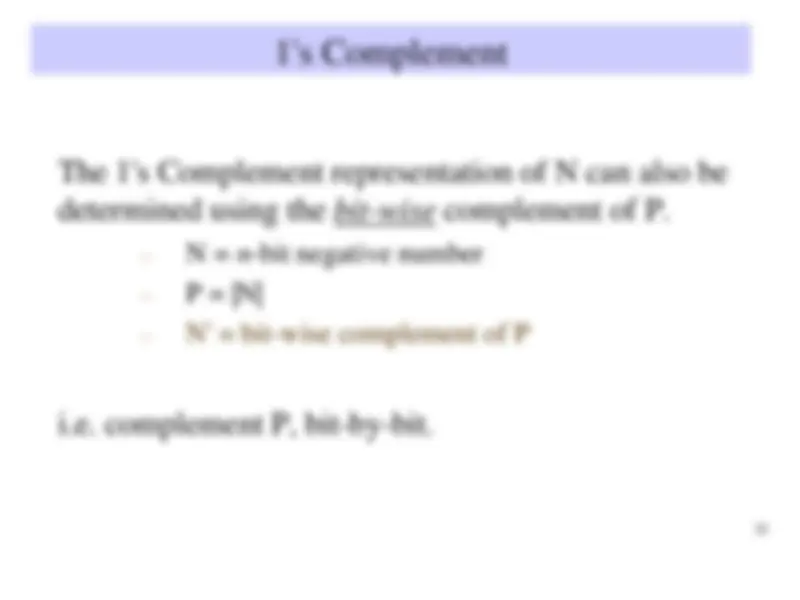
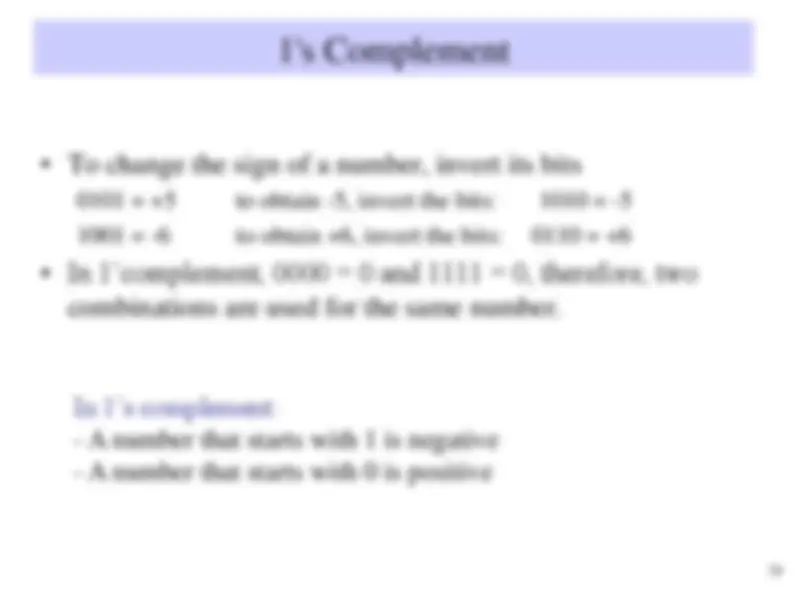
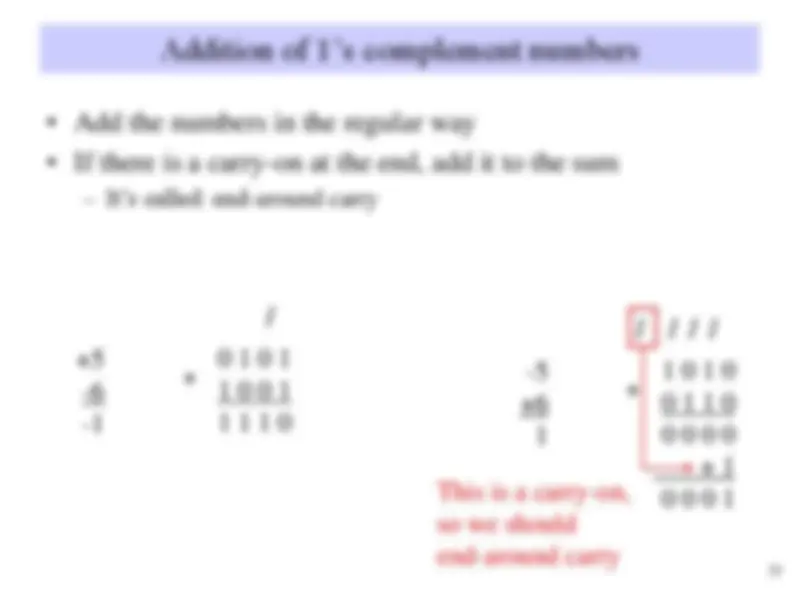
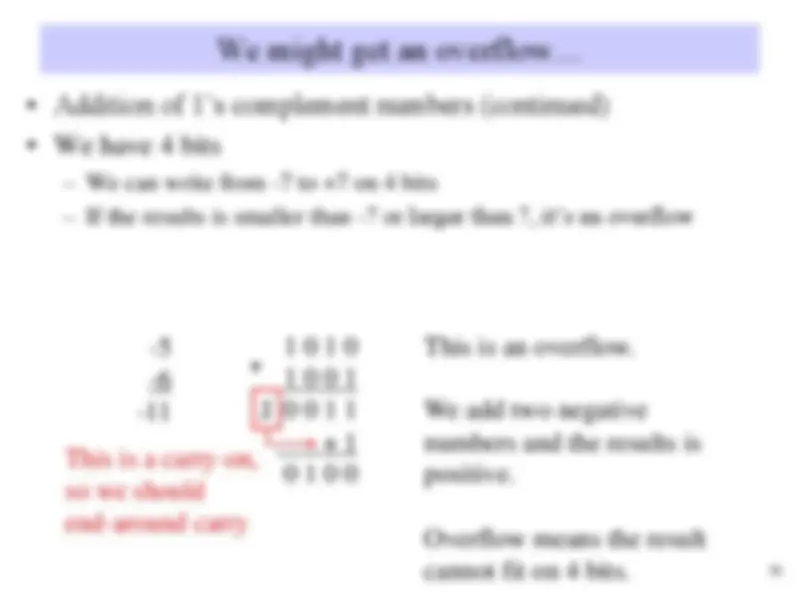
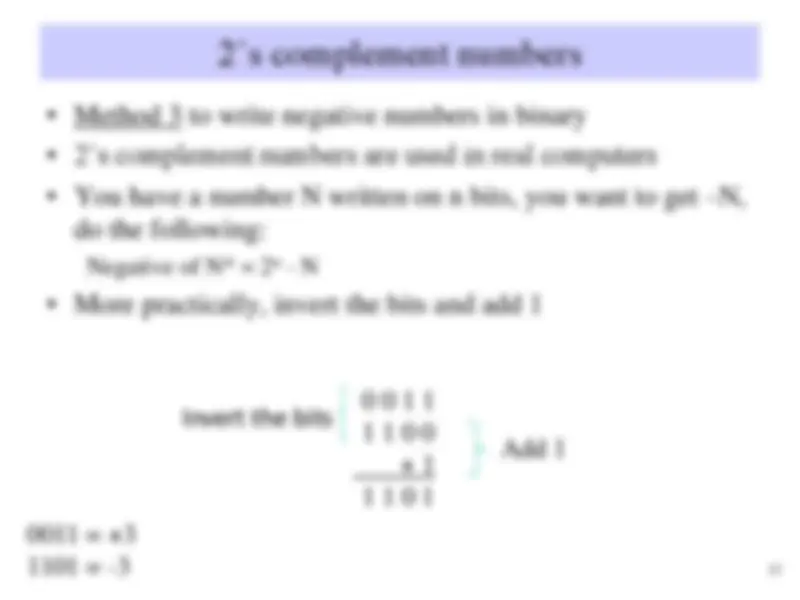
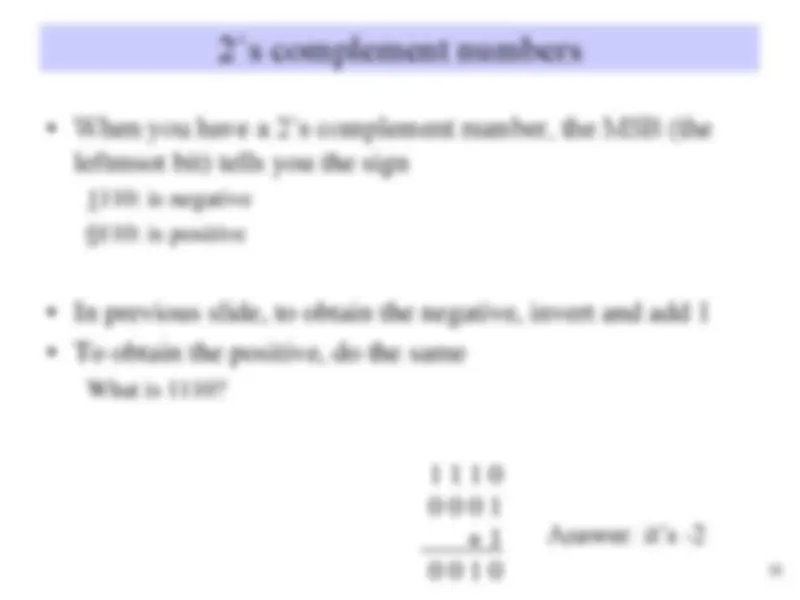
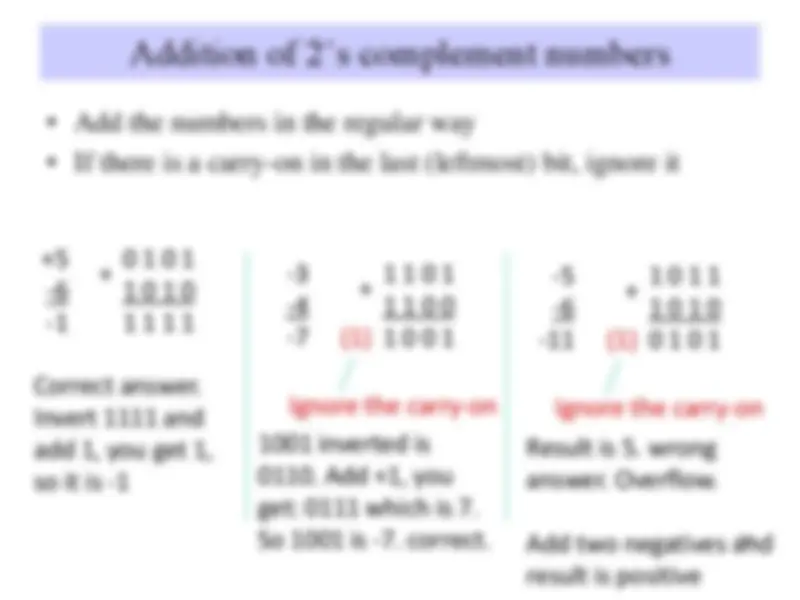
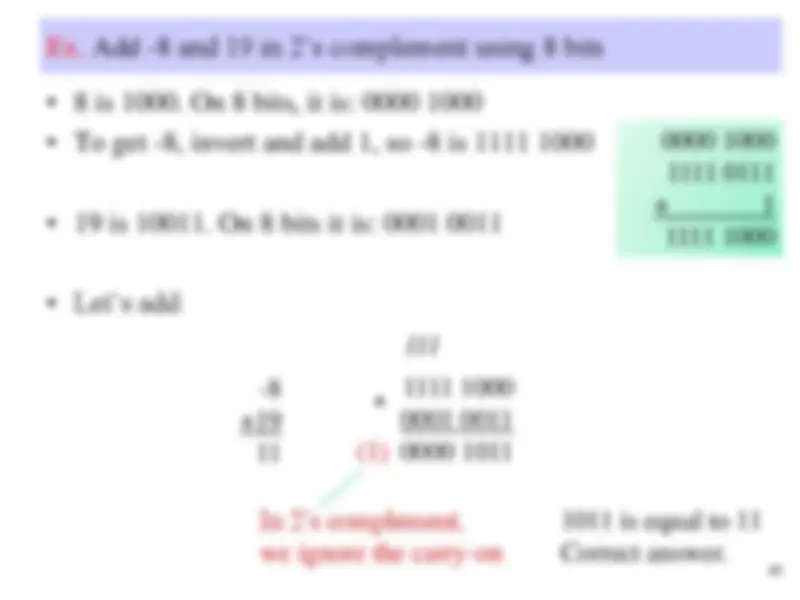

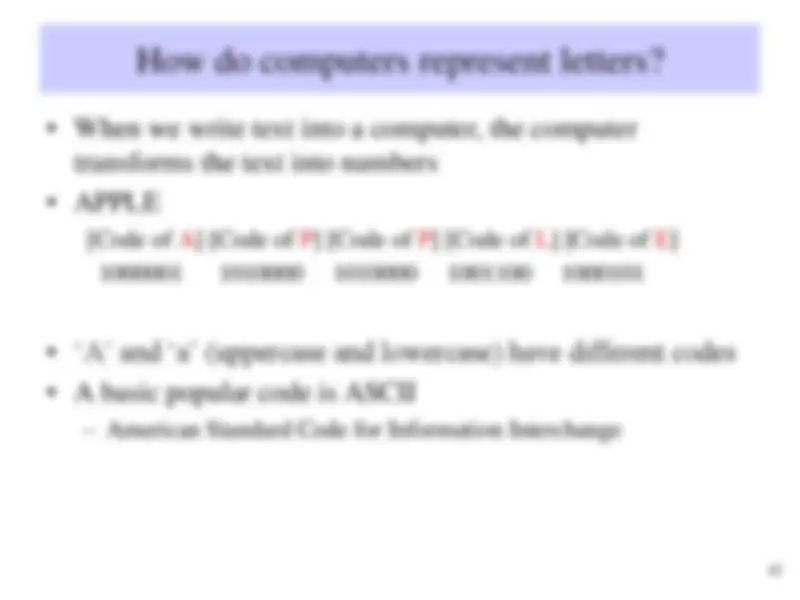
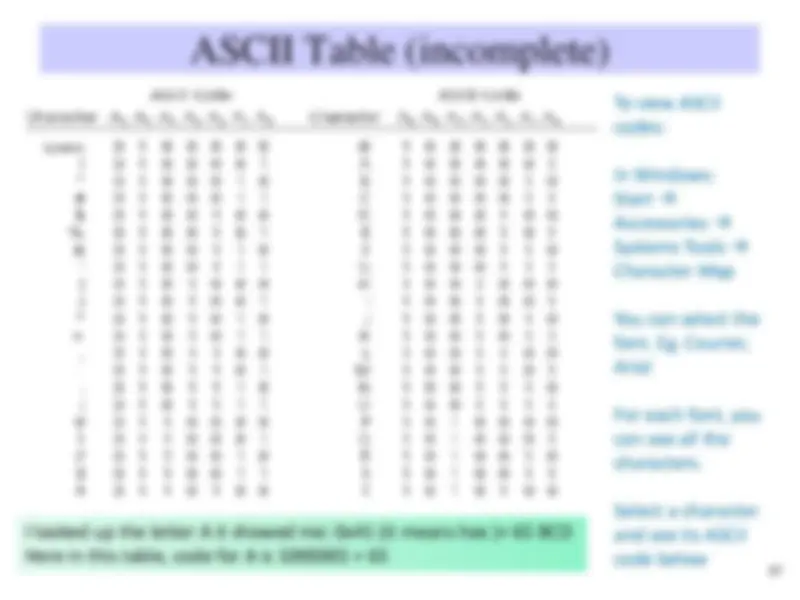
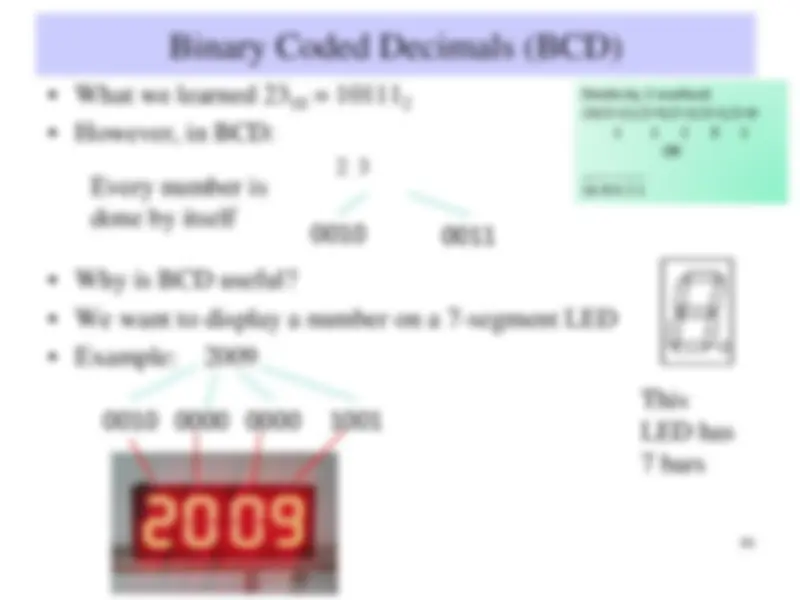
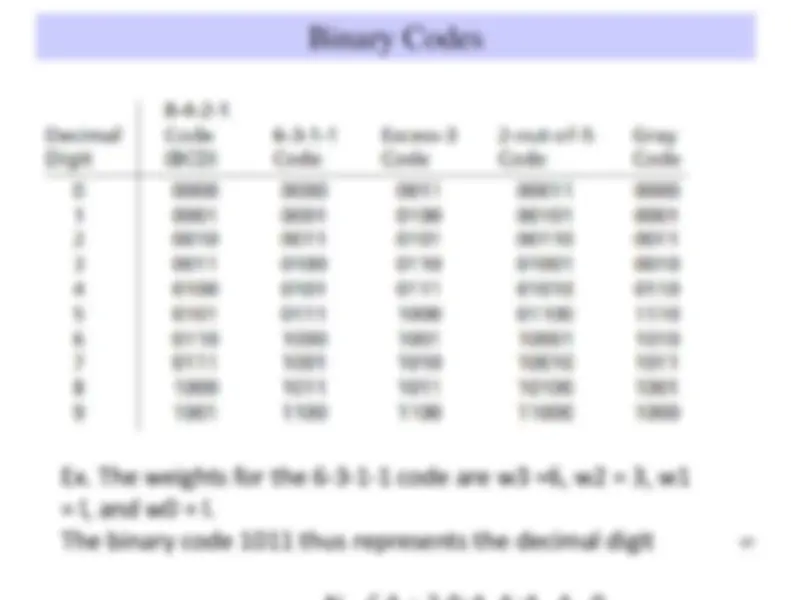
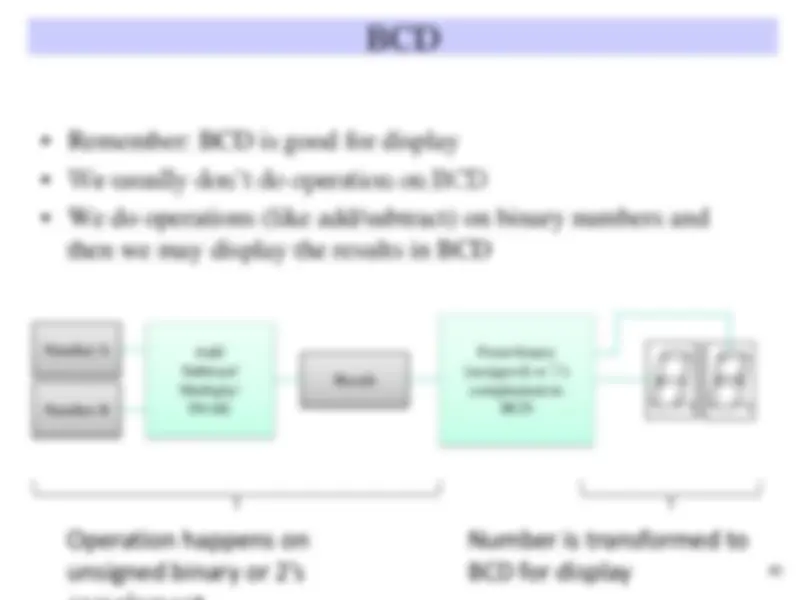


Study with the several resources on Docsity

Earn points by helping other students or get them with a premium plan


Prepare for your exams
Study with the several resources on Docsity

Earn points to download
Earn points by helping other students or get them with a premium plan
Community
Ask the community for help and clear up your study doubts
Discover the best universities in your country according to Docsity users
Free resources
Download our free guides on studying techniques, anxiety management strategies, and thesis advice from Docsity tutors
In class notes and lecture notes
Typology: Lecture notes
1 / 46

This page cannot be seen from the preview
Don't miss anything!







































Instructor: Dr. Suboh A. Suboh Department of Electrical Engineering and Computer Science
Numbers
10
There are other number systems
Another example in base 10
1
0
Numbers in Base 5
341.21 (base 5) Written as
5
5
2A3 (base 16)
2
1
0
16
Convert to binary
Remainders a 0 ① a 1 ① a 2 ① a 3 ① a 4 ⓪ a 5 ①
2
5
4
3
2
1
0
Convert to binary with fractions
2
Base 10 to Base 4
4
4
There are two ways to find Hexadecimals
10
16
10
16
325 /2 = 162 / 2 = 81 / 2 = 40 / 2 = 20 / 2 = 10 / 2 = 5 / 2 = 2 / 2 = 1 / 2 = 0 1 0 1 0 0 0 1 0 1 325 = 101000101 = 0001 0100 0101 1 4 5 = 145 16
Convert from base x to base y
3
10
3
Example: Convert 0. 10 to binary
2
Try This
Binary Arithmetic
0 + 0 = 0 0 + 1 = 1 1 + 0 = 1 1 + 1 = 0 and carry 1 to the next column Carry-in=1; 1+1 =1 and carry-out = 1 in next column 1 1 0 1 1 0 1 1 0 1 0 0 1 1 0 1 0 1 0 1 1
54 52 106